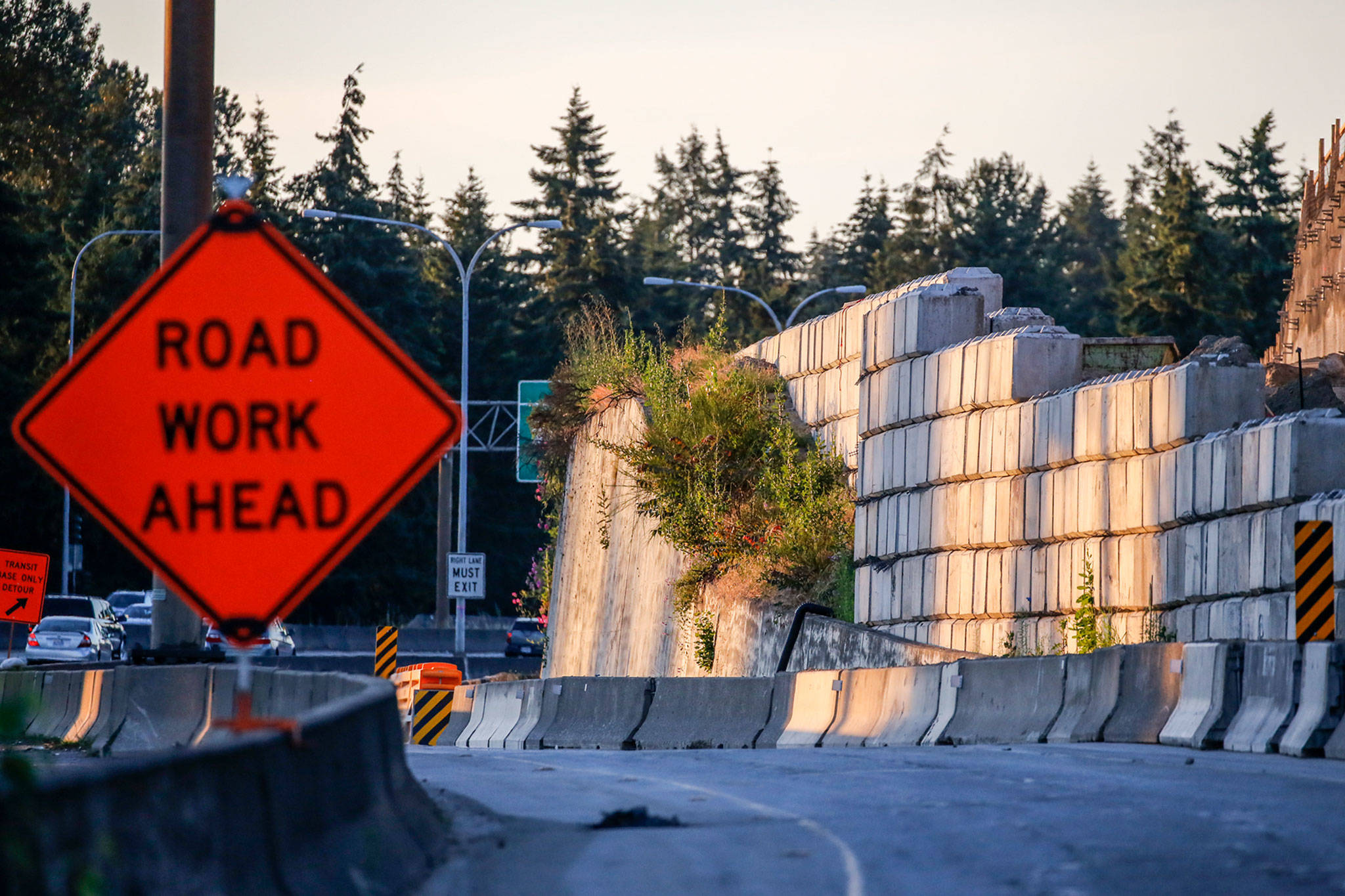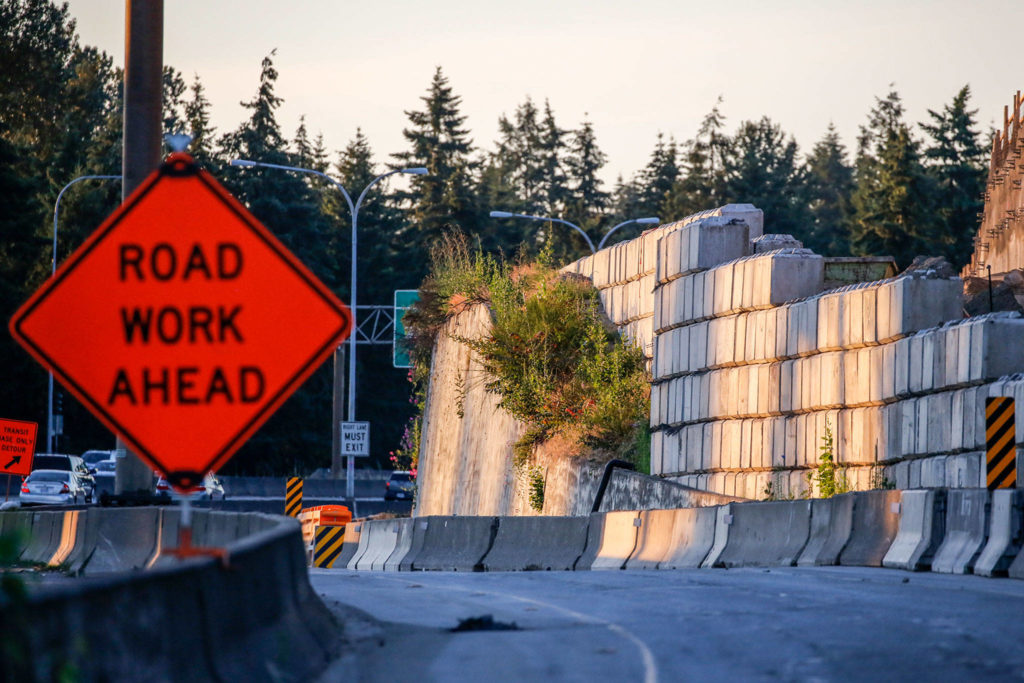Light rail work continues its creep outward from Seattle, and the signs of progress grow ever more evident.
Infrastructure is springing up along 8.5 miles from Northgate to Lynnwood. Columns to support the elevated track are in place along I-5, thousands of trees were cleared, a chunk of the Lynnwood Transit Center is a construction zone for a new station. Once open and operational in four years, the Lynnwood Link light rail extension is projected to carry up to 55,000 riders a day by 2026.
One part of the project caught a reader’s eye.
“Do you know if those block walls that look like LEGOs are permanent or just temporary to support the land while they shift things around?” asked Michael Scherping of Mill Creek. “They’re pretty unsightly and uneven.”
Given the seasonal drab that hits Western Washington for what feels like 10 months of the year, I can understand a reader’s distress over seeing unadorned slate line large stretches of I-5.
He’ll be glad to learn the sight he finds displeasing is only there so crews can build the permanent wall behind them. Basically the block walls are there until different-but-similar block walls takes their place.
“The finished walls along the alignment will have a similar look to adjacent WSDOT I-5 corridor structures/walls,” Sound Transit spokesperson John Gallagher said in an email.
Most of the retaining and sound walls along I-5 have grooves on the exterior, which is what Gallagher shared with me in an emailed photo — not the artistic ones with leaf and vine designs.
It could be less visually appealing. In some places where the existing sound wall had to be removed, Sound Transit installed temporary fencing with sound dampening material that looks like a beige quilt (Can I borrow some to blot out the noise of the dorks who rev their engines along my street and rattle my old single-pane windows?).
Depending on the need, Sound Transit relies on several kinds of structures and concepts to keep the ground in place. Cantilever, geosynthetic, gravity, mechanically stabilized earth (called by its acronym, MSE), rock, soil nail, soldier pile, and tangent pile walls are all examples in the project’s design documents.
Work on the retaining walls near 212th Street Southwest, 50th Avenue West and 52nd Avenue West was scheduled to last until November 2021.
Have a question? Email streetsmarts@heraldnet.com. Please include your first and last name and city of residence.
Talk to us
> Give us your news tips.
> Send us a letter to the editor.
> More Herald contact information.


























